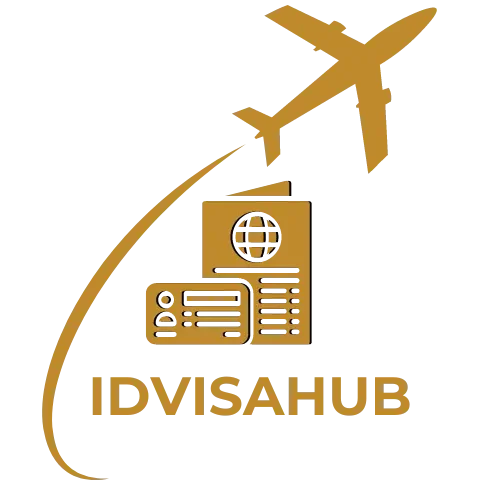Why Cloud-Based Crew Tools Are Game-Changers
In the fast-evolving maritime industry, efficiency, communication, and data-driven decision-making have become essential to running smooth operations at sea and onshore. From managing crew rotations to tracking certifications and ensuring compliance, shipping companies are under constant pressure to modernize their systems. One of the most significant technological advancements helping them achieve this is the rise of cloud-based crew tools.
These innovative platforms are transforming how shipping companies manage their workforce, optimize logistics, and maintain compliance across a globally distributed environment. Let’s explore why these tools are true game-changers for modern shipping and how they’re setting a new standard for efficiency and safety at sea.
What Are Cloud-Based Crew Tools?
Cloud-based crew tools are digital platforms that operate online, using cloud technology to store, manage, and synchronize crew-related data in real time. Instead of relying on traditional software installed on local computers or manual spreadsheets, these tools run on secure servers accessible from any location with an internet connection.
For shipping companies, this means no more disconnected databases or paper-heavy systems. Crew managers, vessel operators, and HR teams can access up-to-date information about crew schedules, certificates, medicals, and training records at any time, from anywhere.
These platforms often include modules for:
- Crew planning and scheduling
- Document management and compliance tracking
- Payroll and contracts
- Performance monitoring and reporting
- Communication and onboarding
Well-known maritime software providers have already embraced the shift, offering powerful solutions that integrate seamlessly with existing management systems and enable real-time visibility into crew operations.
If you’re interested in understanding how cloud technology continues to evolve across industries, this overview of cloud innovation provides an excellent foundation for exploring its broader impact.
Why Are Cloud-Based Crew Tools Important in Modern Shipping?
The maritime industry operates in one of the most complex global environments imaginable, ships constantly moving between jurisdictions, ports, and time zones. Crew management, therefore, presents unique logistical challenges.
Cloud-based tools address these challenges by providing real-time visibility and centralized control over crew operations. Whether managing a fleet of five vessels or fifty, shipping companies can monitor every aspect of crew activity from one digital dashboard.
The importance of cloud-based systems in maritime operations also extends to:
- Global accessibility: Crew data can be securely accessed from any location, ideal for multi-national teams.
- Automatic updates: Cloud platforms ensure the latest software versions and compliance standards are always in place—without manual maintenance.
- Data consistency: Centralized systems eliminate duplication errors and ensure every department is working with accurate, synchronized data.
Moreover, as the shipping industry continues to digitize, cloud-based tools are helping operators comply with regulatory frameworks like the Maritime Labour Convention (MLC) and STCW standards by automating compliance tracking and alerts.
How Do Cloud-Based Crew Tools Improve Efficiency and Communication?
Efficiency is one of the biggest wins for companies adopting cloud-based crew management systems. Instead of juggling multiple spreadsheets or outdated offline databases, these tools provide one source of truth, streamlining workflows and cutting down on administrative burden.
Here’s how they improve efficiency and communication:
- Real-Time Updates:
Crew changes, schedule adjustments, and compliance alerts can be communicated instantly to relevant personnel. This reduces misunderstandings and ensures crews are properly informed before boarding or disembarking. - Integrated Messaging Systems:
Built-in communication modules allow shore-based managers and crew to exchange messages directly within the platform, keeping correspondence organized and accessible. - Automated Reporting:
Cloud-based systems automatically generate reports for audits, payroll, or compliance purposes, saving hours of manual data compilation. - Mobile Accessibility:
Many platforms now offer mobile-friendly interfaces or apps, meaning crew members can access their schedules, submit forms, or receive notifications directly from their phones, even while at sea.
These improvements not only enhance day-to-day operations but also contribute to better crew satisfaction and retention, a major factor in an industry facing ongoing labor shortages.
What Challenges Do Cloud-Based Crew Tools Help Solve?
Traditional crew management methods often struggle with issues such as data fragmentation, manual errors, and slow communication. Cloud-based tools directly tackle these pain points and introduce greater reliability into maritime operations.
1. Reducing Administrative Overload
Before digital transformation, crew managers often spent countless hours manually updating rosters and checking certifications. Cloud systems automate much of this process, freeing up valuable time for strategic decision-making.
2. Improving Compliance Management
Keeping track of expiring certificates, visa renewals, and training schedules can be overwhelming. Modern systems automatically send reminders, ensuring no document lapses and that the crew remains compliant with international standards.
3. Enhancing Data Security and Backup
Unlike paper or on-premise systems, cloud tools maintain secure, encrypted backups. This ensures that critical crew data isn’t lost due to hardware failure or cyberattacks.
4. Simplifying Crew Changes
Crew changes are among the most complex operations in shipping. Cloud tools streamline the process by integrating scheduling, travel logistics, and document verification in one place.
5. Bridging Onshore and Offshore Communication Gaps
One of the long-standing challenges in the maritime world has been poor communication between ships and onshore offices. Cloud-based systems provide real-time connectivity, reducing delays in information exchange.
For a deeper look at how technology is shaping global industries, including shipping, this complete guide to tech trends and news offers valuable insights into the latest developments.
The Future of Crew Management with Cloud Technology
The adoption of cloud-based tools is just the beginning of a broader digital transformation across the maritime sector. As emerging technologies like AI, IoT, and predictive analytics integrate with cloud platforms, the potential for automation and intelligence in crew management will grow exponentially.
Here are a few key trends shaping the future:
- Predictive Scheduling: AI will anticipate crew changes based on operational data and availability, optimizing rotation planning automatically.
- Smart Compliance Tracking: Machine learning algorithms will monitor certification validity and proactively flag upcoming issues.
- Enhanced Collaboration Tools: Future cloud solutions will offer immersive dashboards that integrate real-time vessel data, HR systems, and communication tools.
- Seamless Integration with Port and Immigration Systems: Data-sharing capabilities will simplify immigration and visa processes for international crew movements.
As the maritime world becomes more connected, cloud technology will play a pivotal role in ensuring safe, compliant, and efficient operations across all fleet sizes.
Conclusion
Cloud-based crew tools represent a powerful evolution in how the maritime industry operates. They bring together everything shipping companies need: data management, communication, compliance, and security, into one integrated platform that’s accessible anywhere in the world.
By embracing these systems, operators not only streamline their operations but also strengthen safety, efficiency, and crew satisfaction. As the industry moves toward a smarter and more connected future, the companies that adopt cloud technology early will be the ones best positioned to lead the way.
Frequently Asked Questions
1. How do cloud-based crew tools improve safety and compliance at sea?
Cloud-based tools ensure that crew certifications, medical records, and safety training documents are always up-to-date. Automatic alerts notify managers when renewals or revalidations are required, reducing the risk of non-compliance or unqualified personnel being assigned to critical tasks.
2. Are cloud-based crew tools secure enough for sensitive maritime data?
Yes. Leading cloud platforms use advanced encryption, access control, and multi-factor authentication to protect sensitive data. They also host data in compliance with international standards such as ISO/IEC 27001, ensuring that information is protected both at rest and in transit.
3. Can small shipping companies also benefit from cloud-based crew tools?
Absolutely. Cloud solutions are scalable, allowing smaller operators to access the same technology used by large fleets, without the heavy upfront costs of hardware or software maintenance. Many platforms offer flexible subscription pricing, making them ideal for companies of all sizes.






